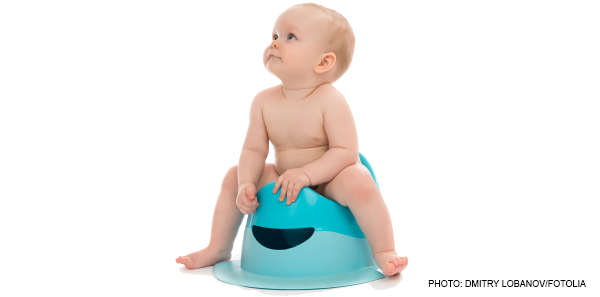
Question 2: For fecal disimpaction of children with functional constipation, are enemas better than oral polyethylene glycol (PEG) therapy?
Rarely does a day seem to pass without having the constipation talk with the family of a child with abdominal pain. For the fecal disimpaction portion of constipation, PEG therapy has been shown to be safe in children with an optimal dosing of 1–1.5 g/kg/day.1,2 Regarding head-to-head trials of oral PEG therapy versus enema, two trials address this specific question.
Explore This Issue
ACEP Now: Vol 37 – No 05 – May 2018This first study is a prospective, randomized controlled trial treating children ages 4–18 years with functional constipation and rectal fecal impaction (RFI) who presented to an outpatient clinic (n=90 total patients).3 All patients were confirmed to have a fecaloma (ie, a large amount of hard stool in the rectum) by digital rectal exam. Children were randomized to either PEG 1.5 g/kg/day for six consecutive days (n=44 patients) or to a dioctyl sulfosuccinate enema once daily for six consecutive days (n=46 patients). After this initial disimpaction intervention, the patients performed maintenance PEG until follow-up two or more weeks later. The patients’ families recorded a bowel diary and other objective findings, such as colonic transit time, and tracked bowel motility.
The result? There was no statistically significant difference between the oral PEG and enema therapies. Disimpaction was successful (defined as no fecaloma on rectal exam at follow-up) in 80 percent of the enema group versus 68 percent in the PEG group (P=0.28). (Note: Although there was no significant difference, this study’s protocol is severely limited for ED purposes because it entailed six straight days of therapy.)
A separate prospective, randomized convenience study of children ages 1–17 years (n=80 total patients) evaluated single enema versus three days of PEG therapy in a pediatric emergency department.4 Patients were randomized to either a milk and molasses enema (41 patients at 10mL/kg, with a max of 500 mL) or PEG (39 patients at 1.5 g/kg/day with a max of 100 g/day) for three days. When this intervention was complete, the patients began maintenance dosing PEG for another three days.
To assess the primary outcome of symptom improvement, patients/families were contacted by telephone on days one, three, and five to determine whether symptoms were improving, staying the same, or worsening. These subjective outcomes were compared dichotomously as improving/getting better versus worse/same. Other additional follow-up questions were assessed and dichotomously assessed as well.
Subjective outcomes are a potential limitation of this study and subject to recall bias. That said, at day one, there was a statistically significant difference in improvement when comparing the enema group with the PEG group (odds ratio 0.3; 95 percent CI, 0.1–0.8), but there was no significant difference in symptoms at days three and five. According to the authors, “Enemas produced more rapid initial symptom improvement,” but again, there was no difference at days three or five. Unsurprisingly, 54 percent of patients in the enema group were “somewhat upset” or “very upset” by the therapy at day one follow-up compared with 0 percent in the PEG group.
Pages: 1 2 | Single Page





No Responses to “Should You Give Constipated Kids an Enema or PEG Therapy?”